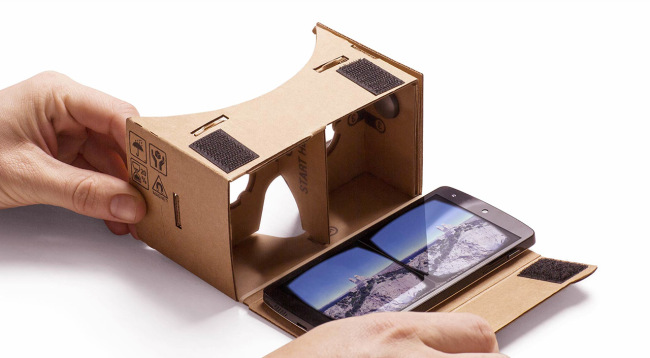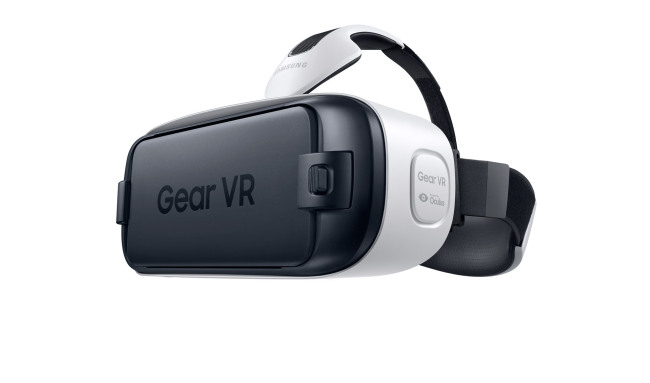[Herald Review] Google Cardboard vs. Samsung Gear VR
By Kim Young-wonPublished : Jan. 29, 2016 - 17:48
When I first tried Google Cardboard, a virtual reality pair of goggles made out of a few pieces of cardboard and two lenses, at The Korea Herald office in Seoul one afternoon, my coworkers giggled, watching me holding the small brown box up to my eyes and struggling to turn around properly in my chair.
But their attention was divided between me and the trendy cardboard goggles, making me feel both embarrassed and flattered.
But their attention was divided between me and the trendy cardboard goggles, making me feel both embarrassed and flattered.

To be honest, I could have done a review on the Cardboard earlier when I got an initial version of the gadget in 2014 from Google.
Maybe I should have, but its inelegant design was a complete turnoff and the content available at the time was very limited. Most importantly, the 5.5-inch Galaxy Note 2 phablet I had at the time was too big to fit in the cardboard frame. So I shoved the VR gadget into a drawer and never took it out.
Despite the same simple design in brown, the upgraded version of the Cardboard I tried this time could be, thankfully, paired with the 5.5-inch Galaxy Note 4.
There were a variety of applications available on the Google Play app market, and I downloaded a bunch of games, camera apps, and apps for space and sea exploration. Most of them were, however, below par. Frankly, I would give them the lowest possible rating.
Some of VR videos posted on YouTube, however, offered a stunningly immersive visual experience.
Some videos, such as “World Tour,” kept me -- a relative VR novice -- attached to the 2 minute, 39 second video. I felt tempted to stretch my arms in the air to touch the clouds and down to the ground to feel the small rocks in the video.
A 360-degree video created by the White House together with Google allows me to look around the library, halls, and rooms of the presidential residence and the VR tour was as vivid as a real-life field trip.
During the virtual visit to the White House, I was hailed by some staff there and also the two dogs of the Obama family. Google also offers a guided VR tour of Buckingham Palace.
Google rolled out the cardboard goggles in 2014 to make VR more widely available and stack up against Facebook’s Oculus Rift head-mounted display, which later served as a prototype of Samsung Electronics’ Gear VR.

The Gear VR, priced at $99, is nearly five times more expensive than the Cardboard at roughly $20.
On the design front, the Gear VR is worth the money. It has a somewhat futuristic, sleek design, and features head straps and a foam cushion on the rear of the device.
It also has a side-mounted touchpad and a back button to control the apps. In the beginning I was struggling to locate the touchpad mainly because I was cut off from the real world, but I soon got used to the controller.
Some of the apps and videos installed on the Gear VR I tested were fascinating, such as animated short films featuring sea creatures and a 12-minute documentary of NBA player LeBron James.
Even though the Gear VR is a better choice over Google Cardboard, at least in terms of durability and design, it definitely needs some improvements.
In particular, the Gear VR’s poor picture quality seemed to be one of the biggest challenges to overcome for the Korean tech giant.
Motion blur was pretty noticeable, and it seemed like it could cause headaches or nausea if someone were to use it for a long time.
The bottom line? Anyone who wants a taste of the emerging VR tech should try some apps and watch VR videos with the Cardboard first. If you want to try VR in style, the Samsung device is a better choice.
By Kim Young-won (wone0102@heraldcorp.com)









![[Hello India] Hyundai Motor vows to boost 'clean mobility' in India](http://res.heraldm.com/phpwas/restmb_idxmake.php?idx=644&simg=/content/image/2024/04/25/20240425050672_0.jpg&u=)








